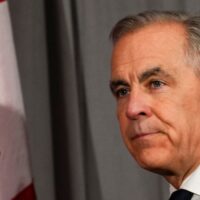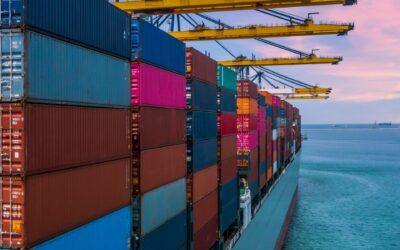Canadian businesses are looking for opportunities beyond the southern border, with the latest monthly data showing a record low proportion of exports going to the United States and increased trade elsewhere. But the other markets with whom Canada seeks to diversify trade are further along on climate policy, which has important implications for Canada’s economic prospects.
Amidst the changing trade landscape, we analyzed the state of climate and sustainable finance policies in Canada’s other major trading partners. While the U.S. retreats, we find that other countries continue to forge ahead. In fact, Canada’s other major trading partners are more aligned with each other on climate than they are with Canada.
If Canada gets left behind, its export growth and business competitiveness in these markets will suffer. Fortunately there are policy solutions—indeed, most of the rest of the world is in the process of implementing them.
Other countries are implementing policies to prepare their markets for climate change
We looked at the uptake of five important and complementary climate and sustainable finance policies across Canada’s top ten non-U.S. trading partners (based on 2024 export values). What emerges is clear global alignment on the fundamentals, which helps to ready markets for climate change and set businesses up for continued growth amidst worsening climate impacts and the energy transition.
- Net zero commitment
Net zero commitments are national targets enshrined in law or policy to achieve net zero greenhouse gas emissions by mid-century. Making these commitments sets a long-term strategic direction for the economy and drives other policy choices.
- Climate investment taxonomy
Climate investment taxonomies define the business activities aligned with achieving net zero. They make it easier for supply chains and investors to identify businesses with low risks and significant opportunities in the climate transition.
- Carbon pricing or emissions trading
Putting a price on carbon financially incentivizes businesses to align with net zero. Over half of global GDP is covered by carbon pricing or an emissions trading system, which gives businesses consistent price signals and allows them to avoid paying carbon tariffs on exports.
- Mandatory climate disclosure
Mandatory climate disclosure requires publicly listed companies to share information on their climate-related risks and opportunities. Again here, over half of global GDP is moving towards globally recognized climate disclosure standards. Leading investors are advocating for the uptake of these standards so that they have the information they need to monitor and mitigate risks and maximize opportunities in their investment portfolios.
- Transition plan guidance
Transition plan guidance describes how companies should use corporate transition plans to develop and disclose forward-looking information on how they are managing climate risks and opportunities as part of their business strategy. These plans include consideration of how a company is taking action to follow through on its climate ambitions, as well as its governance and accountability channels. Transition planning represents a next step in how markets communicate about climate change, with investors increasingly looking to transition plans to understand the role businesses will play in the net zero transition.
Canada is aligned with non-U.S. trade partners on some policies, but falling behind on others
Collectively, by moving on these five policies, countries are defining markets, creating incentives, and facilitating the sharing of important information around climate change risks and opportunities. If Canada hopes to expand its presence in other markets, its policies will need to be compatible.

All of the countries we assessed are party to the Paris Agreement, meaning there’s a common commitment to decarbonize the economy by mid-century. And all but Mexico have enshrined their commitment to net zero in law or through policy.
Most countries have articulated criteria for net zero-aligned business activities through a taxonomy, or are in the process of doing so. And although they lack taxonomies, Japan and the U.K. still provide robust definitions and guidance through other means, namely comprehensive guidelines for green bonds and transition planning. Canada has previously committed to developing a national taxonomy but has yet to make progress on this commitment, making it harder for Canadian businesses to identify as net zero aligned.
Further, Canada’s major trade partners almost universally agree to financially penalize emissions and incentivize clean energy. Every country we analyzed puts a price on emissions, except for India and the U.A.E.. Even then, India plans to launch its emissions trading system next year and the U.A.E. has created a market for voluntary carbon trading.
Canada was an early innovator on carbon pricing and its industrial carbon price has proven its effectiveness with a negligible impact on consumers. The federal government recently scrapped the consumer-facing carbon price, though, and any further weakening of carbon pricing would create mismatched incentives between Canada and most of its trade partners, as well as expose Canadian businesses to paying carbon tariffs in order to access some markets.
Finally, every country except for Canada has implemented or is making progress toward mandatory climate disclosures. This gives them an advantage for identifying climate risks and opportunities and creates a foundation for taking the next step towards transition planning guidance or standards. Here is where Canada is falling furthest behind, with no mandatory disclosure or formalized transition plan guidance. Canadian authorities developed voluntary standards for climate disclosure but securities regulators have recently paused work on making them mandatory. The lack of disclosure standards makes it harder for businesses to plan for and respond to climate risks, and the absence of formal government policy means that the provision of transition plan guidance will be left to non-government initiatives, such as the investor-led Business Future Pathways initiative.
Climate policy alignment can help diversifying Canadian exports beyond the U.S.
Canada is largely out of line with most of the global economy, and importantly, the partners with which the government aims to expand trade. Only two of the five climate policies we assessed are in place, with the remainder showing a lack of progress. This divergence makes it harder and costlier for businesses to operate across markets, creating friction in the flow of goods and capital.
While the United States remains an important trading partner, its policy direction is contrary to other major markets and to long-term economic growth and stability. Canada is at an inflection point. It can choose to follow the U.S. backwards and fall further behind the rest of its peers, or it can accelerate its work to catch up with other markets. Choosing the latter will help Canadian businesses find new growth opportunities and help Canada decarbonize its economy at the same time.






